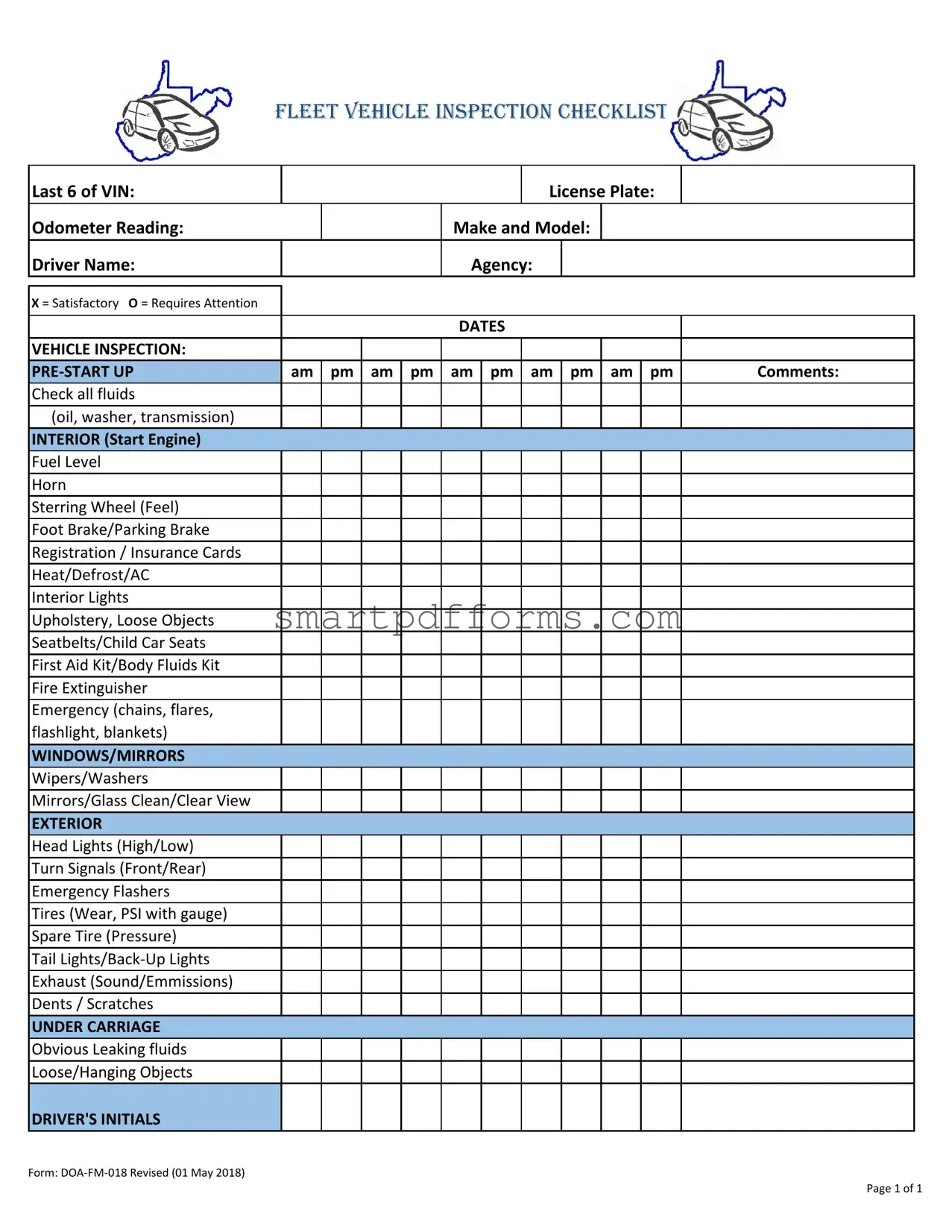Blank Fleet Vehicle Inspection PDF Template
The Fleet Vehicle Inspection form, specifically the DOA-FM-018 revised on May 1, 2018, is a comprehensive checklist designed to ensure the safety and operational efficiency of fleet vehicles. This form covers a variety of inspections including pre-start checks, interior and exterior assessments, and undercarriage examinations to identify any issues that require attention. For those responsible for managing fleet vehicles, completing this form meticulously is crucial for maintaining vehicle reliability and safety standards.
To ensure your fleet remains in top condition, start by filling out the inspection form today. Click the button below to begin.
Make This Document Now

